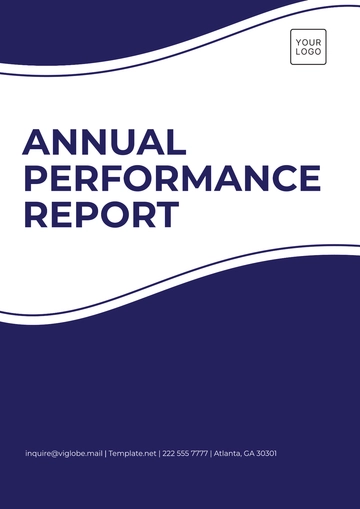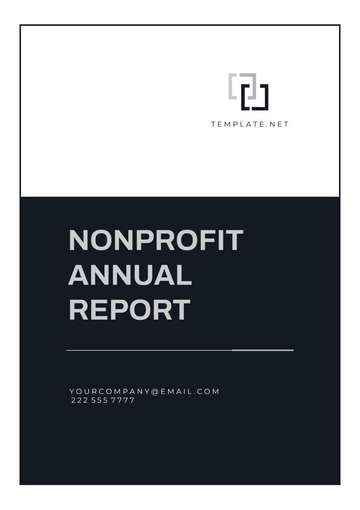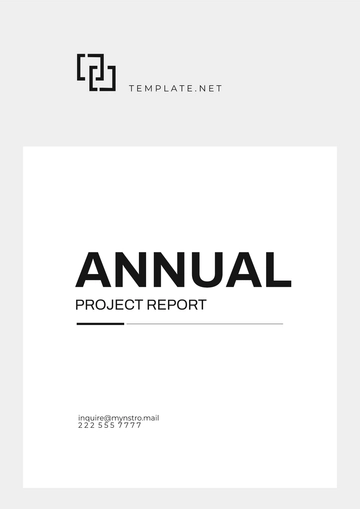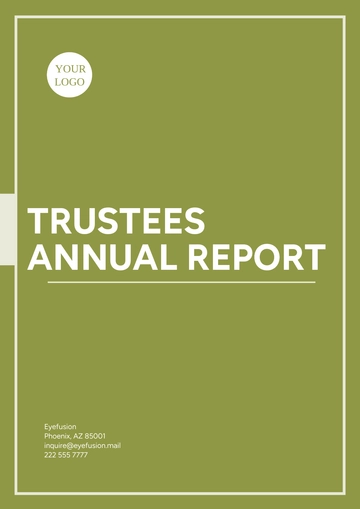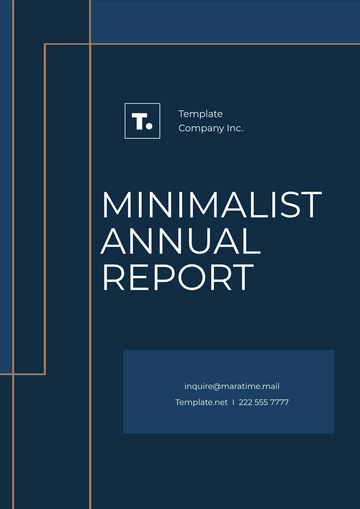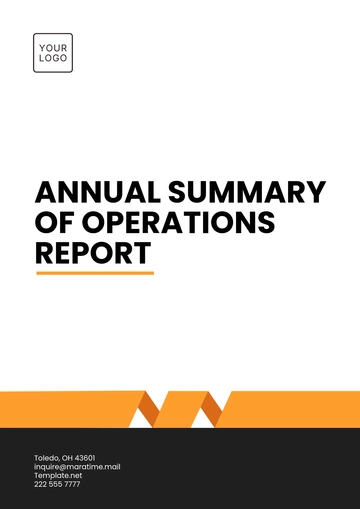Free Agriculture Environmental Report
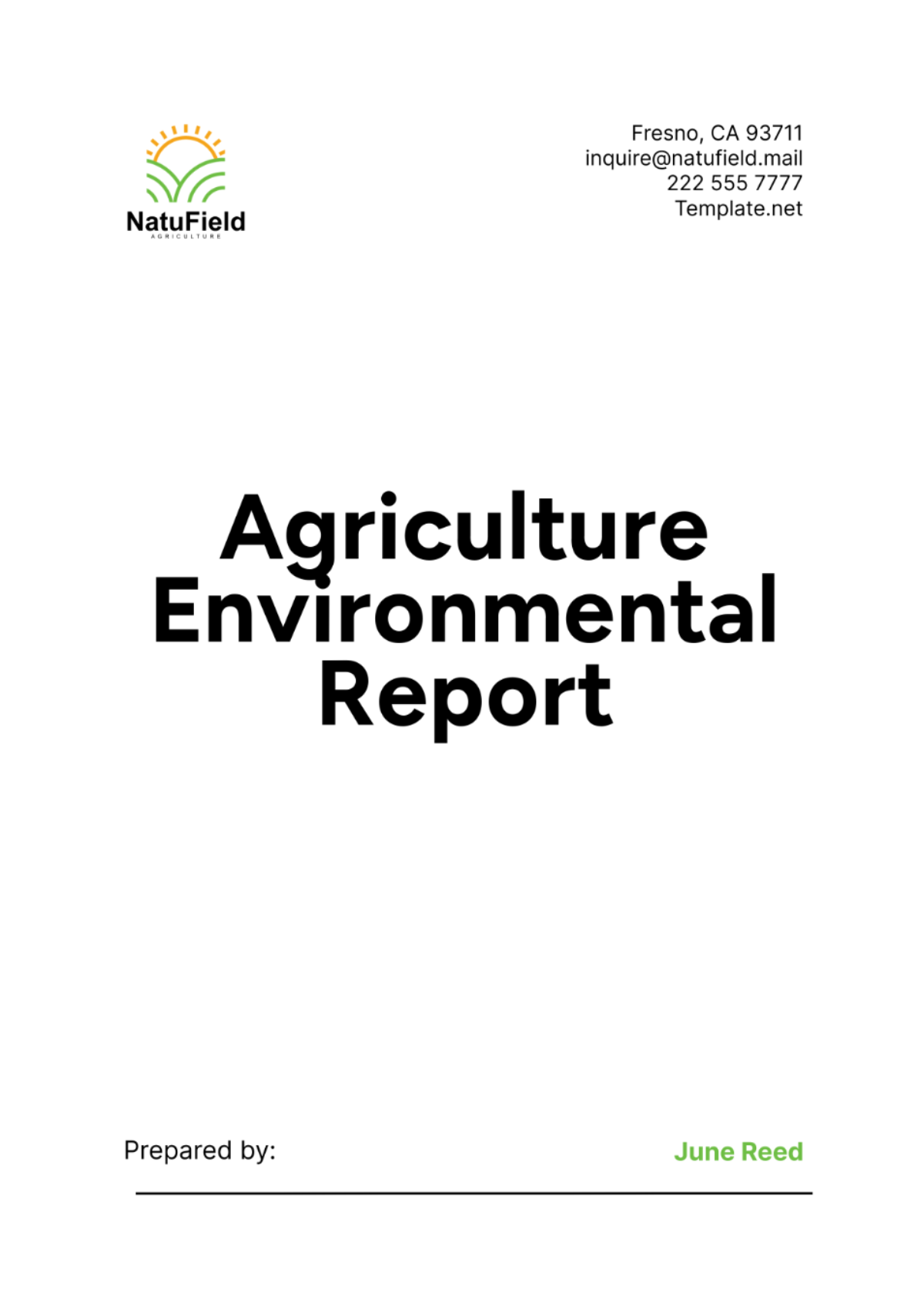
I. Introduction
A. Overview of the Agricultural Operation
[Your Company Name]'s agricultural operation, situated in the fertile [Region], spans 200 acres and specializes in sustainable cultivation of organic vegetables. Established in [Year], our farm prioritizes environmentally friendly practices to ensure long-term soil fertility and ecosystem health. We employ a diverse crop rotation strategy and integrate cover crops to enhance soil structure and nutrient cycling, supporting robust plant growth and minimizing erosion risks.
B. Purpose and Scope of the Environmental Report
This comprehensive report assesses the environmental impacts of our agricultural activities, focusing on soil health, water resources, air quality, biodiversity, and regulatory compliance. By documenting our environmental practices and performance, we aim to demonstrate our commitment to sustainable farming and compliance with local, state, and federal environmental regulations. The report also outlines strategies for continual improvement and sustainable growth while fostering transparency with stakeholders and the community.
C. Regulatory Context and Compliance Requirements
Our operations adhere to stringent environmental regulations, including the Clean Water Act, Endangered Species Act, and local ordinances governing agricultural practices. Compliance is ensured through regular audits, environmental assessments, and permits for water use, pesticide application, and land management. By meeting these regulatory requirements, we aim to protect natural resources, minimize environmental impact, and maintain our commitment to responsible agricultural stewardship.
II. Environmental Impact Assessment
A. Soil Health and Management Practices
Our soil health management practices involve regular soil testing and amendment with organic compost, tailored to optimize nutrient levels and pH balance for different crop rotations. Table 1 below illustrates soil health parameters monitored quarterly, including organic matter content, pH levels, and nutrient concentrations. Through these practices, we maintain soil fertility, enhance water retention capacity, and reduce erosion risks, supporting sustainable crop production year-round.
Table 1: Soil Health Parameters
Parameter | Measurement (Units) | Current Level | Target Level |
|---|---|---|---|
Organic Matter Content | % | [00] | [00] |
pH | pH units | ||
Nitrogen | ppm | ||
Phosphorus | ppm |
B. Water Resources and Quality
Irrigation Practices
Our irrigation system utilizes drip irrigation combined with soil moisture sensors to optimize water application based on crop needs and soil moisture levels. Table 2 summarizes water usage data for the past year, demonstrating our commitment to efficient water management practices and conservation efforts.
Table 2: Water Usage Data (Last Year)
Month | Water Used (m³) | Crop Irrigated | Efficiency (%) |
|---|---|---|---|
[Month] | [00] | Tomatoes | [00] |
Water Use Efficiency Measures
Implementation of rainwater harvesting systems and adoption of recycled water for non-potable uses further reduce our reliance on freshwater sources. We aim to achieve a water use efficiency rate of over 80% annually through continuous monitoring and optimization of irrigation practices.
C. Air Quality and Emissions
Greenhouse Gas Emissions
Greenhouse gas emissions are monitored using emission factors and periodic measurements. Our farm implements practices such as reduced tillage and the use of biodiesel in machinery to minimize carbon dioxide (CO2) emissions. Table 3 outlines greenhouse gas emissions from farm operations over the past three years, reflecting our efforts to reduce environmental impact.
Table 3: Greenhouse Gas Emissions
Year | CO2 Emissions (kg) | CH4 Emissions (kg) | N2O Emissions (kg) |
|---|---|---|---|
[Year] | [00] | [00] | [00] |
Dust and Particulate Matter
Dust control measures such as vegetative barriers and gravel road maintenance are implemented to minimize airborne particulates and dust emissions, ensuring air quality standards are met throughout the farm operations.
D. Biodiversity and Habitat Conservation
Impact on Local Flora and Fauna
Regular biodiversity surveys conducted on our farm reveal a diverse ecosystem supporting various native plant species and wildlife habitats. Monitoring data indicates an increase in species diversity and population stability, attributed to habitat restoration efforts and sustainable land management practices.
Habitat Enhancement Initiatives
Installation of native plant hedgerows and nesting boxes for beneficial insects and birds enhances biodiversity and promotes natural pest control mechanisms. Our farm is committed to preserving and enhancing wildlife habitats while minimizing disturbances to local ecosystems.
III. Compliance and Regulatory Analysis
A. Overview of Environmental Regulations
Our farm operates within a regulatory framework that includes local, state, and federal environmental laws aimed at protecting soil, water, and air quality. Key regulations we adhere to include the Clean Water Act, which governs our water discharge practices, and the Endangered Species Act, which guides our conservation efforts to protect native wildlife habitats.
B. Compliance with Local, State, and Federal Laws
Compliance audits conducted annually verify our adherence to environmental regulations. We maintain comprehensive records of pesticide usage, water testing results, and land management practices to demonstrate compliance with permit requirements and environmental standards.
C. Permits and Environmental Assessments
Required permits, such as those for pesticide application and water extraction, are obtained and renewed as per regulatory requirements. Environmental assessments are conducted before any major changes or expansions to ensure minimal impact on natural resources and compliance with environmental laws.
IV. Risk Assessment and Mitigation
A. Identification of Environmental Risks
By conducting regular and thorough risk assessments, we are able to systematically identify a range of potential environmental risks, which include but are not limited to soil erosion, groundwater contamination, and habitat fragmentation. These assessments encompass various methodologies that allow us to pinpoint areas of concern with a high degree of accuracy.
Afterwards, we use risk mapping techniques together with vulnerability assessments to effectively ascertain the urgency and priority of the identified risks. This organized method aids in creating and executing specific mitigation strategies that are crucial for protecting valuable environmental resources and ensuring their preservation. Moreover, by proactively tackling these risks, we can greatly reduce disruptions to our operations, enhancing overall sustainability and operational efficiency.
B. Mitigation Strategies and Best Practices
The implementation of diverse erosion control measures, such as contour farming and the establishment of vegetative buffer strips, plays a vital role in mitigating soil erosion and reducing sediment runoff. These techniques help in stabilizing the soil and preventing its displacement by water and wind. Additionally, the adoption of Integrated Pest Management (IPM) practices significantly lessens the dependence on chemical pesticides.
Integrated Pest Management (IPM) enhances the sustainability of ecosystems and conserves beneficial insect populations crucial for natural pest control by utilizing a combination of biological, physical, and cultural methods, which ultimately safeguards environmental health and promotes long-term agricultural productivity.
C. Emergency Response and Contingency Plans
Emergency response plans are comprehensive documents that detail specific procedures to be followed in the event of various incidents such as spills, fires, and natural disasters. These plans are designed with the primary goal of minimizing the environmental impact and ensuring that any such incidents are swiftly contained and mitigated. To achieve this, the plans often include a range of proactive measures and protocols that guide the response effort.
Regular drills and training sessions are essential for preparing staff to effectively implement emergency procedures, ensuring they are familiar with response plans and skilled in emergency management, with a focus on proactive measures to protect critical environmental resources like soil, water, and wildlife habitats, thus minimizing potential damage during actual emergencies.
V. Sustainability Practices
A. Sustainable Farming Techniques
The adoption of agroecological practices, which include methods such as crop rotation, cover cropping, and companion planting, leads to an enhancement of both soil health and fertility. These specific practices work together to create a more sustainable and productive agricultural system. Crop rotation involves varying the type of crops grown in a particular area in sequenced seasons, which helps break pest and disease cycles and improves soil nutrient levels.
Implementing cover cropping and companion planting techniques, which involve growing crops to protect and enrich soil rather than for harvest and cultivating different plant species together for mutual benefits, effectively minimizes soil disturbance and increases organic matter content. This enhancement of soil structure and prevention of erosion leads to better water retention, resilience to drought, and overall more productive and sustainable agricultural ecosystems, providing a long-term, robust farming solution.
B. Resource Conservation Measures
Adopting energy-efficient technologies and utilizing renewable energy sources, such as the installation of solar panels and the implementation of energy-efficient irrigation systems, play a significant role in diminishing our overall carbon footprint, ultimately leading to a decrease in operational costs. In addition, implementing water conservation measures, such as drip irrigation and rainwater harvesting, is vital for maximizing water usage efficiency and supporting sustainable water management, ultimately leading to a more sustainable and cost-effective use of resources.
C. Integration of Renewable Energy Sources
The installation of solar panels on farm buildings serves to generate renewable energy, significantly reducing reliance on fossil fuels and mitigating the release of greenhouse gases. These forward-thinking initiatives stand as a testament to our unwavering commitment to sustainability.
Utilizing solar energy, we enhance local energy autonomy and demonstrate our commitment to environmental protection for future generations, thereby actively fostering a sustainable and eco-friendly energy system and affirming our responsibility as environmental stewards.
VI. Data Collection and Analysis
A. Methodology for Data Collection
Data collection encompasses a systematic and ongoing process of observing and measuring various environmental parameters to assess ecosystem health and function. This process includes the regular monitoring of soil health indicators, which may involve assessing parameters such as nutrient levels, pH, organic matter content, and the presence of contaminants.
The process entails assessing water quality parameters, including temperature, pH, dissolved oxygen, turbidity, and levels of pollutants and nutrients, monitoring air emissions for pollutants and particulates, evaluating biodiversity for species variety and abundance, and collecting precise data through scientific sampling and continuous logging of soil and water, all of which helps in gauging environmental performance, spotting issues, and guiding protective measures.
B. Analysis of Environmental Monitoring Data
The processes of statistical analysis and trend monitoring applied to the amassed data play a critical role in identifying discernible patterns and correlations. These analytical methods serve as valuable tools that inform and direct ongoing efforts aimed at continuous improvement. By comparing the current data against baseline data, the effectiveness of existing management practices can be thoroughly assessed. This comparison also highlights specific areas where enhancements can be made, contributing to the overall goal of improved environmental stewardship.
C. Trends and Observations
A detailed examination of various ecological indicators reveals several encouraging trends. In particular, we have observed an increase in soil nutrient levels, an upward trajectory in biodiversity indices, and enhanced parameters related to water quality. The positive changes strongly indicate that sustainable farming practices are effective. Long-term data shows significant environmental improvements, highlighting our commitment to adaptive management and continuous improvement. Overall, the data suggests that our strategies are fostering a healthier and more resilient ecosystem.
VII. Stakeholder Engagement and Community Relations
A. Engagement with Local Communities
We engage with local communities through outreach programs, farm tours, and educational workshops on sustainable agriculture. These initiatives foster dialogue, build trust, and encourage community involvement in our environmental stewardship efforts.
B. Public Outreach and Education Initiatives
Educational workshops cover topics such as soil health management, water conservation, and wildlife habitat preservation. By sharing knowledge and best practices, we empower stakeholders to support sustainable agriculture and environmental conservation in their communities.
C. Feedback and Stakeholder Contributions
Feedback from stakeholders, including neighbors, customers, and environmental advocacy groups, informs our environmental management decisions. We value community input and collaborate on initiatives that address concerns, enhance transparency, and promote shared environmental goals.
VIII. Recommendations
A. Improvements in Environmental Performance
Future initiatives will focus on enhancing soil health through organic amendments, expanding renewable energy installations, and implementing advanced irrigation technologies. These efforts aim to further reduce environmental footprint and improve ecosystem resilience.
B. Long-term Sustainability Goals
Setting goals for carbon neutrality, zero waste production, and enhanced biodiversity conservation will guide our sustainability strategy. We aim to achieve these goals through innovation, collaboration, and continuous improvement in environmental management practices.
C. Policy and Operational Adjustments
Updating farm policies to integrate new research findings and regulatory requirements ensures proactive compliance and adaptation to evolving environmental challenges. These adjustments promote sustainability, resilience, and long-term viability of our agricultural operations.
IX. Conclusion
A. Summary of Findings
This report underscores our commitment to sustainable agriculture and environmental stewardship through rigorous compliance with regulations, implementation of best management practices, and ongoing monitoring of environmental impacts. By prioritizing soil health, water conservation, and biodiversity preservation, we strive to achieve a balance between agricultural productivity and environmental sustainability.
B. Future Directions and Research Needs
Future efforts will focus on advancing sustainable farming techniques, integrating cutting-edge technologies, and conducting research to address emerging environmental challenges. Collaboration with research institutions and industry partners will drive innovation and support our goal of continuous improvement in environmental performance.
C. Community and Stakeholder Engagement
We will continue to engage with stakeholders, including local communities, regulators, and environmental organizations, to foster transparency, build trust, and align on shared environmental objectives. Feedback and input from stakeholders will guide our strategic decisions and initiatives aimed at enhancing environmental resilience and sustainability.
- 100% Customizable, free editor
- Access 1 Million+ Templates, photo’s & graphics
- Download or share as a template
- Click and replace photos, graphics, text, backgrounds
- Resize, crop, AI write & more
- Access advanced editor
Create a professional Agriculture Environmental Report with the Template.net editable template. Customizable to fit your farm's specific data and insights, this template includes an AI Editor Tool for easy customization of sections like Compliance Analysis, Risk Assessment, and Sustainability Practices. Ensure clarity and compliance with environmental regulations effortlessly with this user-friendly template.
You may also like
- Sales Report
- Daily Report
- Project Report
- Business Report
- Weekly Report
- Incident Report
- Annual Report
- Report Layout
- Report Design
- Progress Report
- Marketing Report
- Company Report
- Monthly Report
- Audit Report
- Status Report
- School Report
- Reports Hr
- Management Report
- Project Status Report
- Handover Report
- Health And Safety Report
- Restaurant Report
- Construction Report
- Research Report
- Evaluation Report
- Investigation Report
- Employee Report
- Advertising Report
- Weekly Status Report
- Project Management Report
- Finance Report
- Service Report
- Technical Report
- Meeting Report
- Quarterly Report
- Inspection Report
- Medical Report
- Test Report
- Summary Report
- Inventory Report
- Valuation Report
- Operations Report
- Payroll Report
- Training Report
- Job Report
- Case Report
- Performance Report
- Board Report
- Internal Audit Report
- Student Report
- Monthly Management Report
- Small Business Report
- Accident Report
- Call Center Report
- Activity Report
- IT and Software Report
- Internship Report
- Visit Report
- Product Report
- Book Report
- Property Report
- Recruitment Report
- University Report
- Event Report
- SEO Report
- Conference Report
- Narrative Report
- Nursing Home Report
- Preschool Report
- Call Report
- Customer Report
- Employee Incident Report
- Accomplishment Report
- Social Media Report
- Work From Home Report
- Security Report
- Damage Report
- Quality Report
- Internal Report
- Nurse Report
- Real Estate Report
- Hotel Report
- Equipment Report
- Credit Report
- Field Report
- Non Profit Report
- Maintenance Report
- News Report
- Survey Report
- Executive Report
- Law Firm Report
- Advertising Agency Report
- Interior Design Report
- Travel Agency Report
- Stock Report
- Salon Report
- Bug Report
- Workplace Report
- Action Report
- Investor Report
- Cleaning Services Report
- Consulting Report
- Freelancer Report
- Site Visit Report
- Trip Report
- Classroom Observation Report
- Vehicle Report
- Final Report
- Software Report








